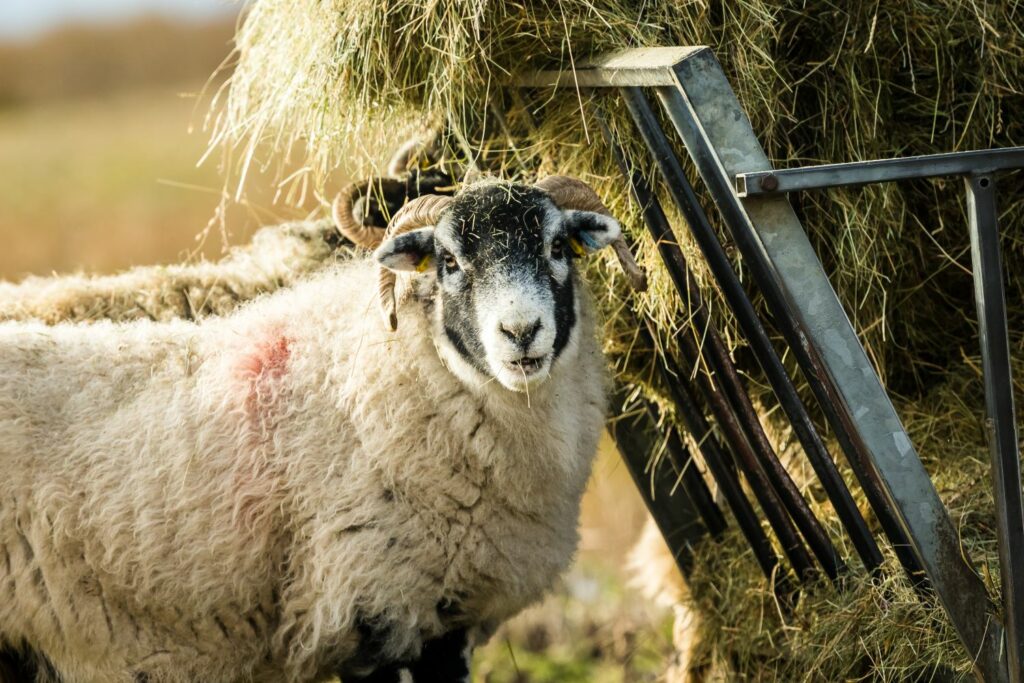NI farmers warned of increased liver fluke risk in ruminants this winter
15th November 2022
The Agri-Food and Biosciences Institute (AFBI) said the risk of liver fluke infection in sheep and cattle will be moderate to high in the Central, South and East regions of Northern Ireland (NI) and a high prevalence of the disease is expected in the West this winter.
The team at AFBI based their predictions on the comparison of climate data from the years 2021 and 2022. Since average rainfall and temperature for both years show comparable patterns, the team expects liver fluke risk in NI to be similar to that of last year.
Liver fluke disease is of great economic importance to the UK agriculture industry and can cause considerable financial loss to sheep and cattle farmers. Fluke infection is known to reduce milk yield in dairy cows by 5-15% and cause ill-thrift in lambs and beef cattle.
According to AFBI, the mean temperature between May and September in NI was 13.7˚C this year, which is 7.0% higher than the average for this period.
As a result, the likelihood of fluke infection in the autumn and winter will be particularly high in poorly drained areas, where snails that act as the intermediate host for liver fluke would have continued to multiply without hindrance.
The disease can occur in either acute or chronic forms, with the latter being more common. Acute liver fluke infection occurs in sheep and has serious welfare implications for affected animals. It is caused by large numbers of immature flukes migrating through the liver and can be fatal if the infection is particularly severe.
Tell-tale signs of liver fluke disease include reduced appetite, abdominal pain and poor production growth. In more severe cases, animals will exhibit a distended abdomen and anaemia, often followed by sudden death.
Unlike the acute form, chronic liver fluke disease occurs in both sheep and cattle. The onset of the disease is typical during the winter and spring, and infection can persist throughout the year. Affected animals may develop a swelling under the jaw known as ‘bottle jaw’.
While fluke infections represent a major health and welfare concern in ruminants, the disease can also predispose dairy cattle to conditions such as ketosis and salmonellosis. Sheep are also likely to experience a similar effect and farmers should monitor their livestock rigorously.
Migrating liver fluke can also trigger black disease, a clostridial infection that is associated by high mortality rates in affected livestock. Therefore, it is paramount that cattle and sheep living in areas affected by liver fluke are vaccinated against this disease.
Chronic fluke infection can usually be treated with an anthelmintic effective against adult flukes. Reducing worm burden in cattle and sheep during the winter or early spring is essential to preventing heavy contamination of pastures with fluke eggs.
However, there is no one-size-fits-all solution, and farmers should work together with veterinarians to develop a flukicide programme tailored to their farm’s needs.
Prevention is better than cure
To reduce the risk of acute or chronic fluke infections, all farmers should take steps to revise their fluke control measures at this critical time of year. It is recommended that sheep is moved off wet and poorly drained pasture that may be contaminated with infested snails.
Moreover, farmers are advised to use anthelmintics strategically and administer products that target the life cycle stages likely to be present in the flock or herd at the time of treatment. In the autumn, when acute fluke disease occurs and infection rates in both cattle and sheep are high, a flukicide effective against both immature and adult worms is needed.
The AFBI recommends using such a product on out-wintered sheep once or twice in autumn, and possibly once more in January depending on worm burden. Combined with a final treatment against adult flukes in early spring, farmers should see a significant reduction in the fluke burden of their livestock.
However, farmers also need to be aware that resistance against flukicides is emerging across NI and as such they should be used responsibly. For example, farms that have been relying heavily on triclabendazole products for a number of years may now experience a reduction in their effectiveness when treating acute infections.
To check the efficacy of anthelmintic treatments on their farm, farmers can submit faecal samples through their veterinarian for laboratory testing three to four weeks after treatment.
The AFBI veterinary laboratories at Stormont and Omagh perform testing of blood and faecal samples from livestock to check for fluke infection and associated liver damage. For advice on developing a suitable anthelmintic control programme, farmers should contact their veterinarian or local animal health professional.
Further information on liver fluke disease in cattle and sheep is available on the AFBI website: www.afbini.gov.uk

